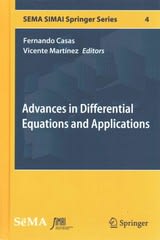Question
This discussion will use the StatCrunch tools in MyStatLab to simulate the tossing of a coin to explore some myths about probability and develop an
This discussion will use the StatCrunch tools in MyStatLab to simulate the tossing of a coin to explore some myths about probability and develop an understanding of the binomial random variable. Take a moment to view this video on the Experiment and Simulation tools in StatCrunch before beginning the exploration activities.Simulations in StatCrunch(Links to an external site.)
July 29, 2016, by Dr. Jack Jackson II, retrieved https://youtu.be/e0H-3VbMfbM
If you flip a standard coin (one that has two different sides, heads and tails, as we have learned to call each side), it will land on either heads or tails. Common conversation may describe this by saying "There is a 1 in 2 chance of getting a head" or a "There is a 1 in 2 chance of getting a tail".Does that mean that in two tosses of a coin, you must have one head and one tail? Does it make a difference if you toss two coins in succession or at the same time? Or, does it mean something entirely different?
Access StatCrunch from the link in the MyLab Statistics Student Links module. Then, click Open StatCrunch; we will be using the Experiment and Simulation options found in the Applets list.
Exploration Activities:
Part I: From the Applets Menu, select "Experiment" then "Flip Coin".
- Explore:Flip the coin twice (without reset). Download the results (click Option) and save it to your device. Click Analyze to record the outcome of each toss in a column of the spread sheet.
- Explore:Flip the coin twenty times (without reset). Download the results (click Option) and save it to your device. Click Analyze to record the outcome of each toss in a column of the spread sheet. Create a probability distribution based on the results.
- For DISCUSSION:Refer to the results of parts a) and b). Do your results suggest that the phrase "1 in 2 chances" means that one-half of the outcomes will always be heads and one-half will always be tails? Support your answer with references to the results and images of your exploration activities. Explain how the Law of Large Numbers is used to determine that the probability of getting a head on any single toss of the coin is, or 0.5.
Part 2: Again using the Applets Menu, select "Simulate" and then "Coin Flipping".
- Explore: Leave the probability at 0.5 and enter 2 to simulate flipping the two coins at the same time. Click 1 run; download the results (click Option) and save it to your device. Click Analyze to record the outcome of 1 run in a column of the spread sheet.
- Explore:Use the simulation tool to flip two coins twenty times. Download the results (click Option) and save it to your device. Click Analyze to record the outcome of each toss in a column of the spread sheet. Create a probability distribution based on the results.
- For DISCUSSION:Explain how the outcome in the column for #2a is different than the outcome in the tossing of one coin twice in #1a above. What is the outcome (in terms of Heads and Tails) that corresponds to the value in the column for #2a? Support your comments with references to the results and images of your exploration activities.
Part 3:For DISCUSSION:Explain the difference between tossing a coin 20 times to determine the empirical probability of an outcome (see part 1 b) and a binomial experiment based on 20 tosses of a coin.Identify real world examples of situations which have exactly two outcomes. Give examples of two related probability questions: one which would be answered based on the law of large numbers and the second which would required the use of a binomial probability distribution. Explain why the questions are different and require different approaches to solving. DO NOT ANSWER THE PROBABILITY QUESTIONS, just present them.
RESPONSES:When responding to the posts of classmates, identify similarities and differences which may exist in the exploration outcomes. Why do you think differences may exist? What do you think about their examples? Can you provide any additional information that will expand the discussion about their examples?
Step by Step Solution
There are 3 Steps involved in it
Step: 1

Get Instant Access to Expert-Tailored Solutions
See step-by-step solutions with expert insights and AI powered tools for academic success
Step: 2

Step: 3

Ace Your Homework with AI
Get the answers you need in no time with our AI-driven, step-by-step assistance
Get Started


